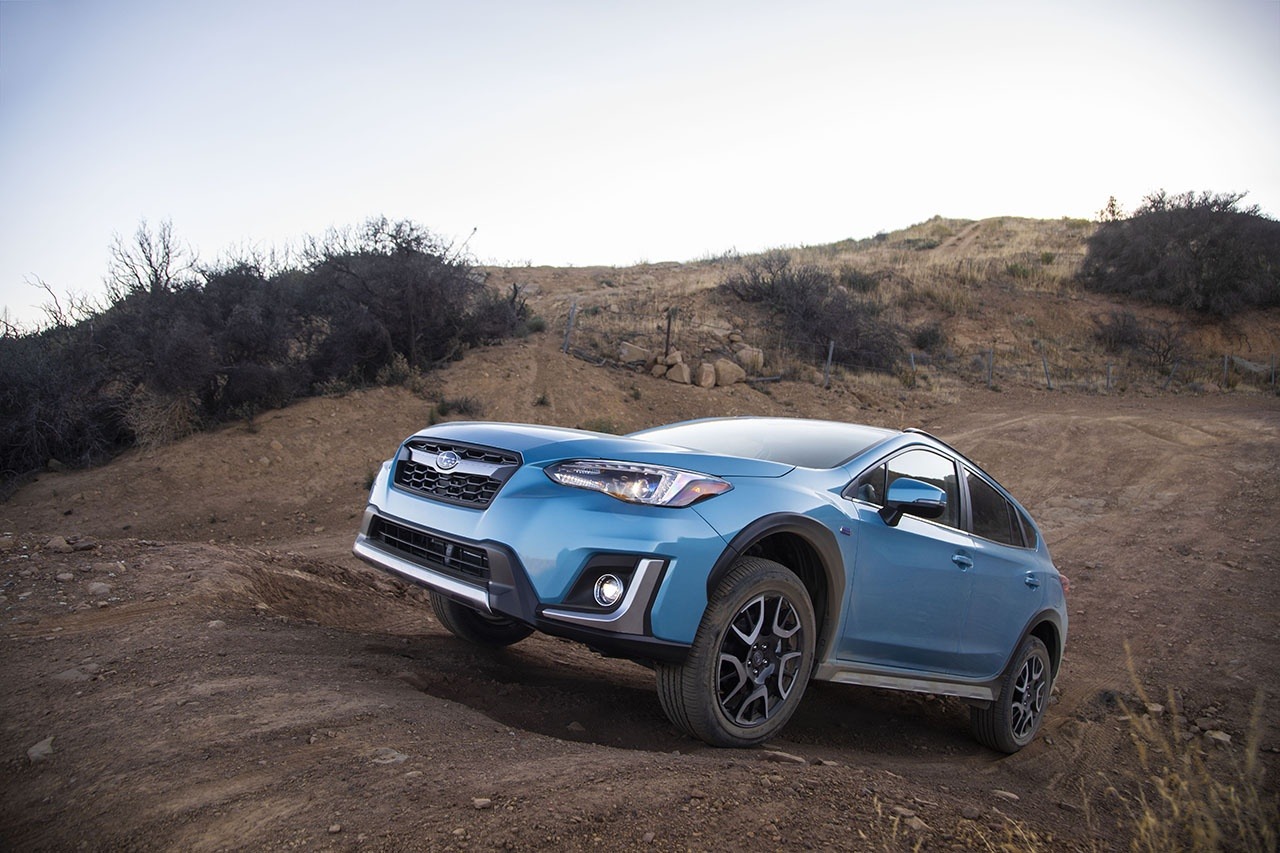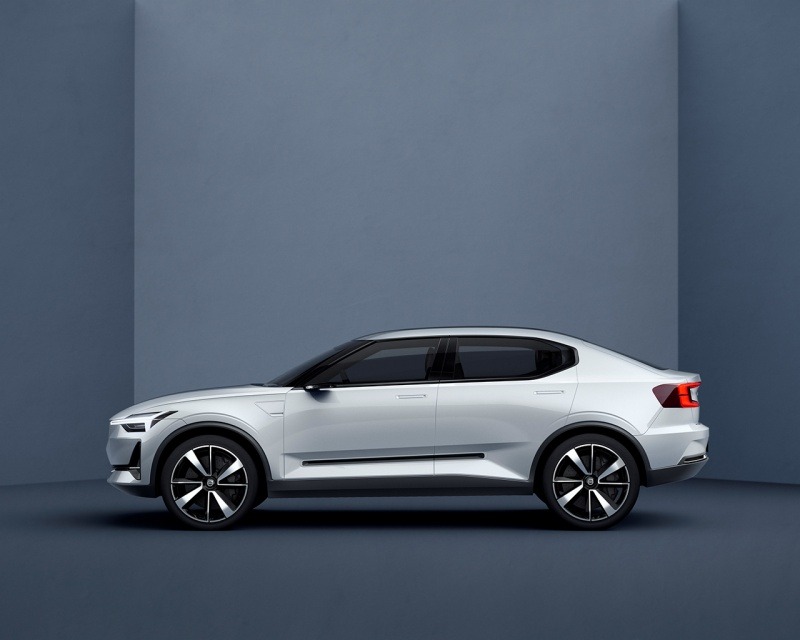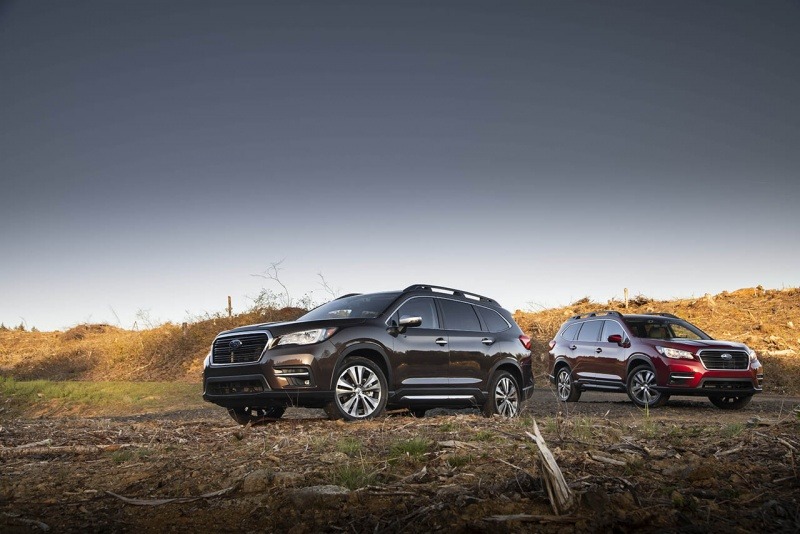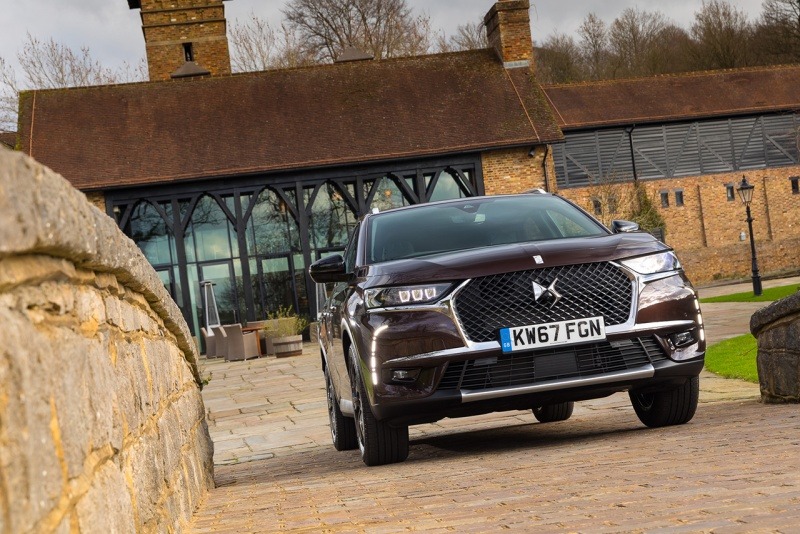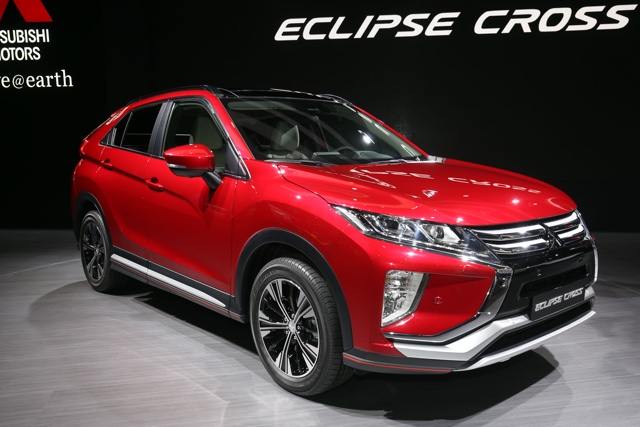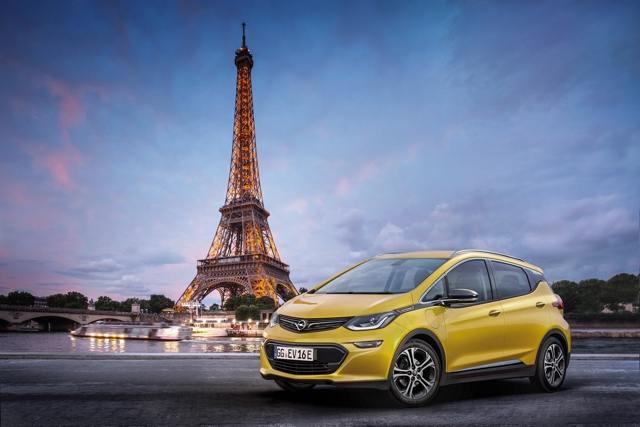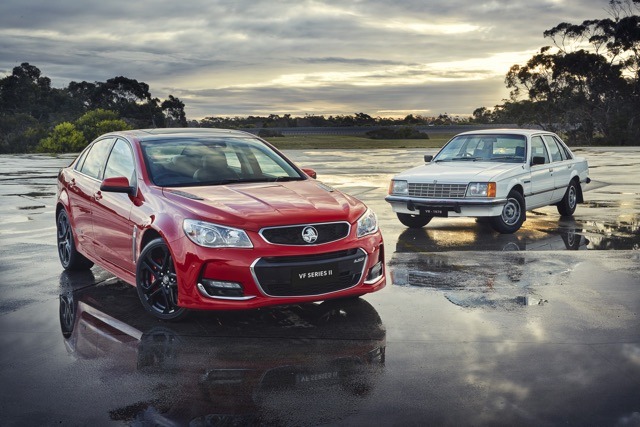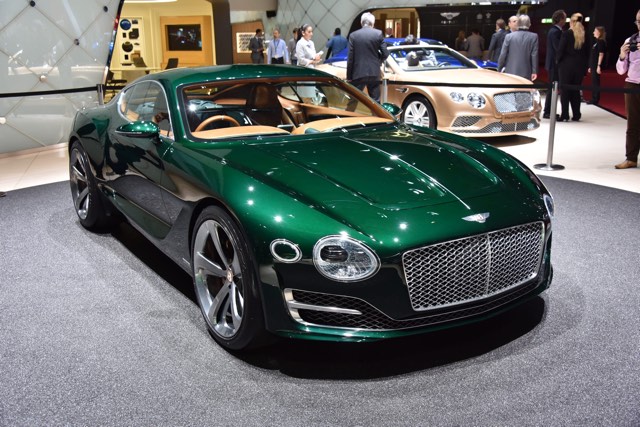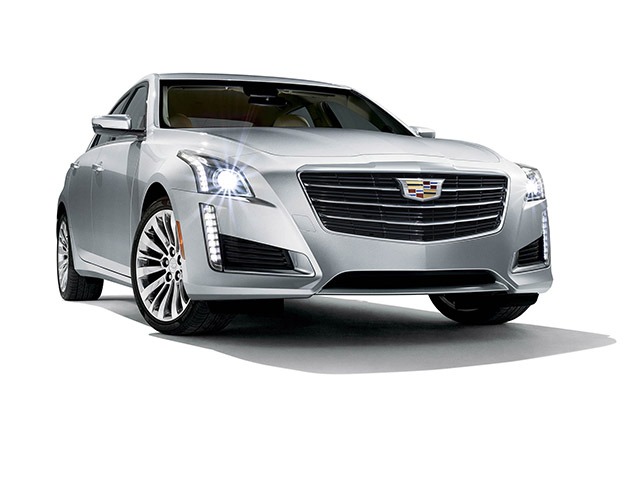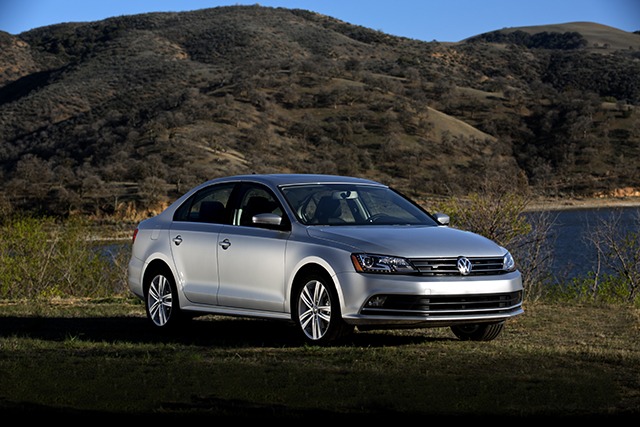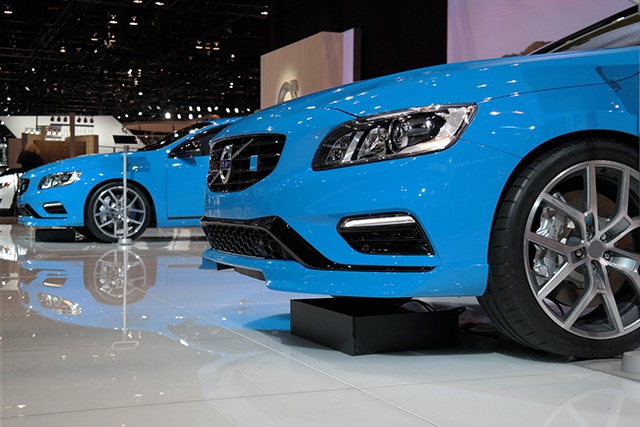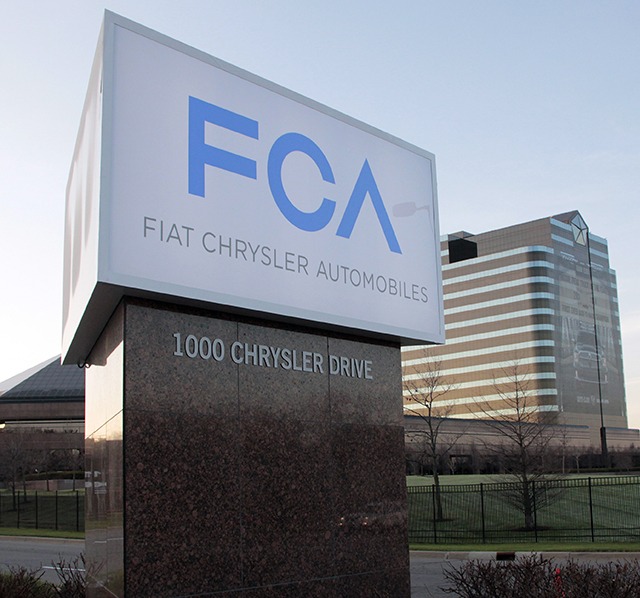Search the Community
Showing results for tags 'plan'.
-
On Wednesday, General Motors invited a number of media to their tech center in Warren, MI for their EV Day event. The company is making a big bet on electric vehicles with 11 new vehicles rolling out by 2025, featuring a new electric modular platform and battery tech. Here's what we know. Third-Generation Electric Vehicle Platform Underpinning this massive push is GM's new third-generation EV platform (BEV3). The new platform was designed to provide flexibility for different vehicle types - ranging from compact cars to pickup trucks. Battery packs are designed to be mounted beneath the passenger compartment to allow for a lower center of gravity. This results in more passenger room and improved handling. The platform also allows for different drive configurations - front, rear, or all-wheel drive - depending on the vehicle. Ultium Battery Technology Providing the electric power for these new models is what GM calls Ultium batteries. Working together with its battery partner LG Chem, the Ultium batteries are large-format, pouch-style cells that can either be stacked vertically or horizontally in packs. This will allow more flexibility for engineers to design battery packs for vehicles. More important is the chemistry of the batteries. GM has reduced the amount Cobalt - an element used in the making of batteries that is becoming harder to find and expensive - by seventy percent. Instead, the batteries are using aluminum. This will hopefully bring down the price of the battery packs. Battery capacity will range from 50 to 200 kilowatt hours - giving a projected max range of 400 miles depending on the vehicle. Level II and DC fast-charging are both supported. The Vehicles At the event, GM had 10 vehicles on display and one shown via digital renderings. The current plan is to start launching the new models beginning later this year. Updated Chevrolet Bolt: The first vehicle to be launched in this offensive. It will get an updated interior with a more premium dash. Chevrolet Bolt EUV: The crossover-variant of the Bolt, it is about five-inches longer and rides on a wheelbase that has been stretched by three inches. An updated roofline reportedly eliminates the small front windows on the Bolt. The EUV will also be the first model outside of Cadillac to get Super Cruise. Chevrolet Midsize Crossover: About the same size as the Blazer, this model has an aggressive design and features a low roofline. A pair of 18-inch multimedia displays dominate the interior. Chevrolet Full-Size Truck: This was the model only shown in digital renderings according to those who were at the event. It will complement the Silverado and be aimed at those who want something to be used on a job site - not like the upcoming GMC Hummer Truck or Rivian which are aimed more at lifestyle folks. This model is expected to arrive in 2025. Buick Crossover and SUV: These two models didn't have a name and were wearing a design that was described by the Detroit Free Press as a "vaguely European look". GMC Hummer Truck: This will only be available in a crew-cab configuration with a five-foot bed. The design will be utilitarian and boxy. Inside, two large screens will serve as the instrument cluster and infotainment system. Don't expect any leather as many of materials used inside will be made from recycled materials. The truck will also have removable roof panels (like the Jeep Wrangler, that can be stored in the front trunk. GMC Hummer SUV: Basically the same as the truck, albeit using a shorter wheelbase. Cadillac Lyriq: We have seen teasers of this model last year and Cadillac dropped another this week showing off the silhouette - reminding us some crossovers from Jaguar and Porsche. The vehicle is wide and rides on 23-inch wheels. Size-wise, it is similar to the XT5. The interior boasts a 34-inch-wide high-def screen and seating for four, though the production model may have seating for five. Cadillac Celestiq: A new four-door flagship sedan that has a long front end and a fastback rear according to those who saw the clay model. It will be hand-built and carry a six-figure pricetag. Cadillac Large SUV: About the size of an Escalade, it be complementary vehicle to it. The model will have a more traditional design than the other Cadillac EVs. Inside, it will boast large screens up front and three-rows of seating. Source: Roadshow, Detroit Free Press, The Drive, General Motors Press Release is on Page 2 GM Reveals New Ultium Batteries and a Flexible Global Platform to Rapidly Grow its EV Portfolio WARREN, Mich. – Starting today, General Motors Co. (NYSE: GM) is gathering hundreds of employees, dealers, investors, analysts, media and policymakers to share details of its strategy to grow the company’s electric vehicle (EV) sales quickly, efficiently and profitably. “Our team accepted the challenge to transform product development at GM and position our company for an all-electric future,” said Mary Barra, GM chairman and CEO. “What we have done is build a multi-brand, multi-segment EV strategy with economies of scale that rival our full-size truck business with much less complexity and even more flexibility.” The heart of GM’s strategy is a modular propulsion system and a highly flexible, third-generation global EV platform powered by proprietary Ultium batteries. They will allow the company to compete for nearly every customer in the market today, whether they are looking for affordable transportation, a luxury experience, work trucks or a high-performance machine. “Thousands of GM scientists, engineers and designers are working to execute an historic reinvention of the company,” said GM President Mark Reuss. “They are on the cusp of delivering a profitable EV business that can satisfy millions of customers.” Ultium Batteries and Propulsion System Highlights GM’s new Ultium batteries are unique in the industry because the large-format, pouch-style cells can be stacked vertically or horizontally inside the battery pack. This allows engineers to optimize battery energy storage and layout for each vehicle design. Ultium energy options range from 50 to 200 kWh, which could enable a GM-estimated range up to 400 miles or more on a full charge with 0 to 60 mph acceleration as low as 3 seconds. Motors designed in-house will support front-wheel drive, rear-wheel drive, all-wheel drive and performance all-wheel drive applications. Ultium-powered EVs are designed for Level 2 and DC fast charging. Most will have 400-volt battery packs and up to 200 kW fast-charging capability while our truck platform will have 800-volt battery packs and 350 kW fast-charging capability. GM’s flexible, modular approach to EV development will drive significant economies of scale and create new revenue opportunities, including: Continuous Improvement in Battery Costs: GM’s joint venture with LG Chem will drive battery cell costs below $100/kWh. The cells use a proprietary low cobalt chemistry and ongoing technological and manufacturing breakthroughs will drive costs even lower. Flexibility: GM’s all-new global platform is flexible enough to build a wide range of trucks, SUVs, crossovers, cars and commercial vehicles with outstanding design, performance, packaging, range and affordability. Capital Efficiency: GM can spend less capital to scale its EV business because it is able to leverage existing property, including land, buildings, tools and production equipment such as body shops and paint shops. Complexity Reduction: The vehicle and propulsion systems were designed together to minimize complexity and part counts beyond today’s EVs, which are less complex than conventional vehicles powered by internal combustion engines. For example, GM plans 19 different battery and drive unit configurations initially, compared with 550 internal combustion powertrain combinations available today. Rising Customer Acceptance: Third-party forecasters expect U.S. EV volumes to more than double from 2025 to 2030 to about 3 million units on average. GM believes volumes could be materially higher as more EVs are launched in popular segments, charging networks grow and the total cost of ownership to consumers continues to fall. New Sources of Revenue: By vertically integrating the manufacture of battery cells, the company can reach beyond its own fleet and license technology to others. The first generation of GM’s future EV program will be profitable. The initial programs will pave the way for further accretive growth. GM’s technology can be scaled to meet customer demand much higher than the more than 1 million global sales the company expects mid-decade. Upcoming Launches and Reveals Chevrolet, Cadillac, GMC and Buick will all be launching new EVs starting this year. The next new Chevrolet EV will be a new version of the Bolt EV, launching in late 2020, followed by the 2022 Bolt EUV, launching Summer 2021. The Bolt EUV will be the first vehicle outside of the Cadillac brand to feature Super Cruise, the industry's first true hands-free driving technology for the highway, which GM will expand to 22 vehicles by 2023, including 10 by next year. The Cruise Origin, a self-driving, electric shared vehicle, shown to the public in January 2020 in San Francisco, was the first product revealed using GM’s third generation EV platform and Ultium batteries. Next will be the Cadillac Lyriq luxury SUV in April. Details about its launch will be shared then. The reveal of the Ultium-powered GMC HUMMER EV will follow on May 20. Production is expected to begin in Fall 2021 at GM’s Detroit-Hamtramck assembly plant, GM’s first assembly plant 100 percent dedicated to EV production.
- 282 comments
-
- 2
-

-

-
- electric vehicles
- general motors
-
(and 2 more)
Tagged with:
-
On Wednesday, General Motors invited a number of media to their tech center in Warren, MI for their EV Day event. The company is making a big bet on electric vehicles with 11 new vehicles rolling out by 2025, featuring a new electric modular platform and battery tech. Here's what we know. Third-Generation Electric Vehicle Platform Underpinning this massive push is GM's new third-generation EV platform (BEV3). The new platform was designed to provide flexibility for different vehicle types - ranging from compact cars to pickup trucks. Battery packs are designed to be mounted beneath the passenger compartment to allow for a lower center of gravity. This results in more passenger room and improved handling. The platform also allows for different drive configurations - front, rear, or all-wheel drive - depending on the vehicle. Ultium Battery Technology Providing the electric power for these new models is what GM calls Ultium batteries. Working together with its battery partner LG Chem, the Ultium batteries are large-format, pouch-style cells that can either be stacked vertically or horizontally in packs. This will allow more flexibility for engineers to design battery packs for vehicles. More important is the chemistry of the batteries. GM has reduced the amount Cobalt - an element used in the making of batteries that is becoming harder to find and expensive - by seventy percent. Instead, the batteries are using aluminum. This will hopefully bring down the price of the battery packs. Battery capacity will range from 50 to 200 kilowatt hours - giving a projected max range of 400 miles depending on the vehicle. Level II and DC fast-charging are both supported. The Vehicles At the event, GM had 10 vehicles on display and one shown via digital renderings. The current plan is to start launching the new models beginning later this year. Updated Chevrolet Bolt: The first vehicle to be launched in this offensive. It will get an updated interior with a more premium dash. Chevrolet Bolt EUV: The crossover-variant of the Bolt, it is about five-inches longer and rides on a wheelbase that has been stretched by three inches. An updated roofline reportedly eliminates the small front windows on the Bolt. The EUV will also be the first model outside of Cadillac to get Super Cruise. Chevrolet Midsize Crossover: About the same size as the Blazer, this model has an aggressive design and features a low roofline. A pair of 18-inch multimedia displays dominate the interior. Chevrolet Full-Size Truck: This was the model only shown in digital renderings according to those who were at the event. It will complement the Silverado and be aimed at those who want something to be used on a job site - not like the upcoming GMC Hummer Truck or Rivian which are aimed more at lifestyle folks. This model is expected to arrive in 2025. Buick Crossover and SUV: These two models didn't have a name and were wearing a design that was described by the Detroit Free Press as a "vaguely European look". GMC Hummer Truck: This will only be available in a crew-cab configuration with a five-foot bed. The design will be utilitarian and boxy. Inside, two large screens will serve as the instrument cluster and infotainment system. Don't expect any leather as many of materials used inside will be made from recycled materials. The truck will also have removable roof panels (like the Jeep Wrangler, that can be stored in the front trunk. GMC Hummer SUV: Basically the same as the truck, albeit using a shorter wheelbase. Cadillac Lyriq: We have seen teasers of this model last year and Cadillac dropped another this week showing off the silhouette - reminding us some crossovers from Jaguar and Porsche. The vehicle is wide and rides on 23-inch wheels. Size-wise, it is similar to the XT5. The interior boasts a 34-inch-wide high-def screen and seating for four, though the production model may have seating for five. Cadillac Celestiq: A new four-door flagship sedan that has a long front end and a fastback rear according to those who saw the clay model. It will be hand-built and carry a six-figure pricetag. Cadillac Large SUV: About the size of an Escalade, it be complementary vehicle to it. The model will have a more traditional design than the other Cadillac EVs. Inside, it will boast large screens up front and three-rows of seating. Source: Roadshow, Detroit Free Press, The Drive, General Motors Press Release is on Page 2 GM Reveals New Ultium Batteries and a Flexible Global Platform to Rapidly Grow its EV Portfolio WARREN, Mich. – Starting today, General Motors Co. (NYSE: GM) is gathering hundreds of employees, dealers, investors, analysts, media and policymakers to share details of its strategy to grow the company’s electric vehicle (EV) sales quickly, efficiently and profitably. “Our team accepted the challenge to transform product development at GM and position our company for an all-electric future,” said Mary Barra, GM chairman and CEO. “What we have done is build a multi-brand, multi-segment EV strategy with economies of scale that rival our full-size truck business with much less complexity and even more flexibility.” The heart of GM’s strategy is a modular propulsion system and a highly flexible, third-generation global EV platform powered by proprietary Ultium batteries. They will allow the company to compete for nearly every customer in the market today, whether they are looking for affordable transportation, a luxury experience, work trucks or a high-performance machine. “Thousands of GM scientists, engineers and designers are working to execute an historic reinvention of the company,” said GM President Mark Reuss. “They are on the cusp of delivering a profitable EV business that can satisfy millions of customers.” Ultium Batteries and Propulsion System Highlights GM’s new Ultium batteries are unique in the industry because the large-format, pouch-style cells can be stacked vertically or horizontally inside the battery pack. This allows engineers to optimize battery energy storage and layout for each vehicle design. Ultium energy options range from 50 to 200 kWh, which could enable a GM-estimated range up to 400 miles or more on a full charge with 0 to 60 mph acceleration as low as 3 seconds. Motors designed in-house will support front-wheel drive, rear-wheel drive, all-wheel drive and performance all-wheel drive applications. Ultium-powered EVs are designed for Level 2 and DC fast charging. Most will have 400-volt battery packs and up to 200 kW fast-charging capability while our truck platform will have 800-volt battery packs and 350 kW fast-charging capability. GM’s flexible, modular approach to EV development will drive significant economies of scale and create new revenue opportunities, including: Continuous Improvement in Battery Costs: GM’s joint venture with LG Chem will drive battery cell costs below $100/kWh. The cells use a proprietary low cobalt chemistry and ongoing technological and manufacturing breakthroughs will drive costs even lower. Flexibility: GM’s all-new global platform is flexible enough to build a wide range of trucks, SUVs, crossovers, cars and commercial vehicles with outstanding design, performance, packaging, range and affordability. Capital Efficiency: GM can spend less capital to scale its EV business because it is able to leverage existing property, including land, buildings, tools and production equipment such as body shops and paint shops. Complexity Reduction: The vehicle and propulsion systems were designed together to minimize complexity and part counts beyond today’s EVs, which are less complex than conventional vehicles powered by internal combustion engines. For example, GM plans 19 different battery and drive unit configurations initially, compared with 550 internal combustion powertrain combinations available today. Rising Customer Acceptance: Third-party forecasters expect U.S. EV volumes to more than double from 2025 to 2030 to about 3 million units on average. GM believes volumes could be materially higher as more EVs are launched in popular segments, charging networks grow and the total cost of ownership to consumers continues to fall. New Sources of Revenue: By vertically integrating the manufacture of battery cells, the company can reach beyond its own fleet and license technology to others. The first generation of GM’s future EV program will be profitable. The initial programs will pave the way for further accretive growth. GM’s technology can be scaled to meet customer demand much higher than the more than 1 million global sales the company expects mid-decade. Upcoming Launches and Reveals Chevrolet, Cadillac, GMC and Buick will all be launching new EVs starting this year. The next new Chevrolet EV will be a new version of the Bolt EV, launching in late 2020, followed by the 2022 Bolt EUV, launching Summer 2021. The Bolt EUV will be the first vehicle outside of the Cadillac brand to feature Super Cruise, the industry's first true hands-free driving technology for the highway, which GM will expand to 22 vehicles by 2023, including 10 by next year. The Cruise Origin, a self-driving, electric shared vehicle, shown to the public in January 2020 in San Francisco, was the first product revealed using GM’s third generation EV platform and Ultium batteries. Next will be the Cadillac Lyriq luxury SUV in April. Details about its launch will be shared then. The reveal of the Ultium-powered GMC HUMMER EV will follow on May 20. Production is expected to begin in Fall 2021 at GM’s Detroit-Hamtramck assembly plant, GM’s first assembly plant 100 percent dedicated to EV production. View full article
- 282 replies
-
- electric vehicles
- general motors
-
(and 2 more)
Tagged with:
-
Today in Tokyo, Subaru put forth an ambitious plan. By the mid-2030s, the Japanese automaker will only sell electric vehicles worldwide. This announcement comes as no surprise as both China and Europe have announced stricter emissions regulations that will be coming in the near future. But to reach that goal, Subaru will be working with Toyota (which owns a 8.7 percent stake in Subaru) on developing both hybrid and electric vehicles. In a statement, Subaru executives said work has started on a “strong hybrid” vehicle using Toyota technology. No other details were provided. The two are also working on full-electric vehicles that will launch sometime this decade. These vehicles will play a key role in Subaru's goal of having 40 percent of vehicles sold be all-electric and electrified cars by 2030. Despite this change in direction for powertrains, Subaru executive's stress their vehicles will retain the key traits that have their vehicles unique. “Although we’re using Toyota technology, we want to make hybrids that are distinctly Subaru,” said Subaru's Chief Technology Officer Tetsuo Onuki. “It’s not only about reducing CO2 emissions. We need to further improve vehicle safety and the performance of our all-wheel drive.” Source: Reuters, Autoblog View full article
-
Today in Tokyo, Subaru put forth an ambitious plan. By the mid-2030s, the Japanese automaker will only sell electric vehicles worldwide. This announcement comes as no surprise as both China and Europe have announced stricter emissions regulations that will be coming in the near future. But to reach that goal, Subaru will be working with Toyota (which owns a 8.7 percent stake in Subaru) on developing both hybrid and electric vehicles. In a statement, Subaru executives said work has started on a “strong hybrid” vehicle using Toyota technology. No other details were provided. The two are also working on full-electric vehicles that will launch sometime this decade. These vehicles will play a key role in Subaru's goal of having 40 percent of vehicles sold be all-electric and electrified cars by 2030. Despite this change in direction for powertrains, Subaru executive's stress their vehicles will retain the key traits that have their vehicles unique. “Although we’re using Toyota technology, we want to make hybrids that are distinctly Subaru,” said Subaru's Chief Technology Officer Tetsuo Onuki. “It’s not only about reducing CO2 emissions. We need to further improve vehicle safety and the performance of our all-wheel drive.” Source: Reuters, Autoblog
-
Polestar is beginning to drop hints on their next model, the 2 which is expected to debut sometime next year. Autocar spoke with Polestar COO Jonathan Goodman at this weekend's Goodwood Festival of Speed. Goodman said the Polestar 2 will be the brand's entry level model and compete directly with the Tesla Model 3. "That will represent the lower ‘bookend’ of our showroom range and, for now, it should give us as much access to the volume end of the EV market as we need," said Goodman. Autocar says the 2's design will closely follow the 40.2 concept shown a couple years back. The report also says that the 2 will have up to 400 horsepower and a max range of 350 miles. Pricing is expected to begin around £30,000 (about $39,690). Goodman also talked about the possible dangers of designing electric vehicles to look futuristic or quirky considering how much the global market for these vehicles is expected to grow. “The global electric car market was worth four million units in 2017, but it’s quite widely expected to be worth 29m units by 2025. EV owners will come from all walks of life. So it’s a mistake to assume that, because the cars are electric, you have to make them quirky or futuristic," explained Goodman. "Other brands may be doing that, but if we’re looking at a market worth 30m cars within seven years, it isn’t going to be niche, it’s going to be mainstream. So you just design a great-looking car – not one with a big blue flash down the side.” Source: Autocar View full article
- 7 replies
-
- electric vehicle
- plan
-
(and 3 more)
Tagged with:
-
Polestar is beginning to drop hints on their next model, the 2 which is expected to debut sometime next year. Autocar spoke with Polestar COO Jonathan Goodman at this weekend's Goodwood Festival of Speed. Goodman said the Polestar 2 will be the brand's entry level model and compete directly with the Tesla Model 3. "That will represent the lower ‘bookend’ of our showroom range and, for now, it should give us as much access to the volume end of the EV market as we need," said Goodman. Autocar says the 2's design will closely follow the 40.2 concept shown a couple years back. The report also says that the 2 will have up to 400 horsepower and a max range of 350 miles. Pricing is expected to begin around £30,000 (about $39,690). Goodman also talked about the possible dangers of designing electric vehicles to look futuristic or quirky considering how much the global market for these vehicles is expected to grow. “The global electric car market was worth four million units in 2017, but it’s quite widely expected to be worth 29m units by 2025. EV owners will come from all walks of life. So it’s a mistake to assume that, because the cars are electric, you have to make them quirky or futuristic," explained Goodman. "Other brands may be doing that, but if we’re looking at a market worth 30m cars within seven years, it isn’t going to be niche, it’s going to be mainstream. So you just design a great-looking car – not one with a big blue flash down the side.” Source: Autocar
- 7 comments
-
- electric vehicle
- plan
-
(and 3 more)
Tagged with:
-
Subaru has been on a roll in the U.S. with 79 months of steady month-over-month growth. But Subaru wants to spread that success to other markets and has a new five-year to try an achieve this. Today in Tokyo, Newly appointed Subaru President Tomomi Nakamura unveiled the plan known as STEP - speed, trust, engagement, and peace of mind. "The automotive industry is now in a tumultuous time. Subaru’s fast growth in recent years has come to highlight our challenges. The question is how we, as a small-scale company, will be able to survive in this big-changing area," said Nakamura. Subaru wants to increase global sales from the 1.1 million vehicles it expects to sell in the current fiscal year to 1.3 million vehicles in the fiscal year on March 31, 2026. To do this, Subaru is planning to launch a number of new products including a hybrid and a "global strategic SUV" in the early 2020s. Furthermore, Subaru will evolving their "Dynamic X Solid design language into a "bolder" expression" and "enhancing sporty models." On the technology front, Subaru is planning to offer Level 2 autonomous capability (i.e. Cadillac Super Cruise and Tesla's Autopilot) around 2020 and higher levels by 2024. It is also planning to offer some sort of connectivity in "80 percent of new vehicles in major markets" by 2022. STEP will also be focusing on regaining trust in Subaru's home market. Last year, Subaru admitted that it had uncertified workers carrying out tests on new cars for Japan for decades. Early this year, the scandal got worse as Subaru revealed that inspectors falsified fuel economy and emission data. It led Japan's transportation ministry to reprimand Subaru and 417,288 vehicles to be recalled in the country. Source: Automotive News (Subscription Required) View full article
-
Subaru has been on a roll in the U.S. with 79 months of steady month-over-month growth. But Subaru wants to spread that success to other markets and has a new five-year to try an achieve this. Today in Tokyo, Newly appointed Subaru President Tomomi Nakamura unveiled the plan known as STEP - speed, trust, engagement, and peace of mind. "The automotive industry is now in a tumultuous time. Subaru’s fast growth in recent years has come to highlight our challenges. The question is how we, as a small-scale company, will be able to survive in this big-changing area," said Nakamura. Subaru wants to increase global sales from the 1.1 million vehicles it expects to sell in the current fiscal year to 1.3 million vehicles in the fiscal year on March 31, 2026. To do this, Subaru is planning to launch a number of new products including a hybrid and a "global strategic SUV" in the early 2020s. Furthermore, Subaru will evolving their "Dynamic X Solid design language into a "bolder" expression" and "enhancing sporty models." On the technology front, Subaru is planning to offer Level 2 autonomous capability (i.e. Cadillac Super Cruise and Tesla's Autopilot) around 2020 and higher levels by 2024. It is also planning to offer some sort of connectivity in "80 percent of new vehicles in major markets" by 2022. STEP will also be focusing on regaining trust in Subaru's home market. Last year, Subaru admitted that it had uncertified workers carrying out tests on new cars for Japan for decades. Early this year, the scandal got worse as Subaru revealed that inspectors falsified fuel economy and emission data. It led Japan's transportation ministry to reprimand Subaru and 417,288 vehicles to be recalled in the country. Source: Automotive News (Subscription Required)
-
PSA Group's decade-long plan of possibly returning to the U.S. continues forward and they are facing their next roadblock, setting up a dealer network. Trying to convince dealers to sell brands that haven't been sold since the early nineties. But the French automaker believes they have a solution, using a tech-centric approach that will be affordable. "We see the high cost of doing this business; we see the challenges that exist in profitability for dealers and OEMs. We believe with the new tools, the new technology, the new customer expectations, there are leaner, more agile ways to do this," said PSA North America chief Larry Dominique to Automotive News. "We need to find a way to reduce our fixed costs. We want people to make a profit selling a new car." A possible strategy could look similar to Hyundai's Shopper Assurance where a customer can do a number of tasks at home such as scheduling a test drive, apply for financing, and complete paperwork. There are things that will benefit from a physical presence such as service and vehicle delivery. Dominique said that he will not be asking those who decide to sell whatever brand PSA Group has in mind to go crazy with building a facility. The bit about making a profit with selling a new vehicle is important here. Data from the National Automobile Dealers Association reveals that new vehicle losses for dealers rose $22 per car in 2015 to $421 in 2017. Used cars got hit worse with dealers losing $2 per car in 2017, from making $132 only three years ago. Source: Automotive News (Subscription Required)
-
PSA Group's decade-long plan of possibly returning to the U.S. continues forward and they are facing their next roadblock, setting up a dealer network. Trying to convince dealers to sell brands that haven't been sold since the early nineties. But the French automaker believes they have a solution, using a tech-centric approach that will be affordable. "We see the high cost of doing this business; we see the challenges that exist in profitability for dealers and OEMs. We believe with the new tools, the new technology, the new customer expectations, there are leaner, more agile ways to do this," said PSA North America chief Larry Dominique to Automotive News. "We need to find a way to reduce our fixed costs. We want people to make a profit selling a new car." A possible strategy could look similar to Hyundai's Shopper Assurance where a customer can do a number of tasks at home such as scheduling a test drive, apply for financing, and complete paperwork. There are things that will benefit from a physical presence such as service and vehicle delivery. Dominique said that he will not be asking those who decide to sell whatever brand PSA Group has in mind to go crazy with building a facility. The bit about making a profit with selling a new vehicle is important here. Data from the National Automobile Dealers Association reveals that new vehicle losses for dealers rose $22 per car in 2015 to $421 in 2017. Used cars got hit worse with dealers losing $2 per car in 2017, from making $132 only three years ago. Source: Automotive News (Subscription Required) View full article
-

Mitsubishi Announces New Strategic Plan, 11 New Models
William Maley posted an article in Mitsubishi
Mitsubishi has unveiled a new three-year strategic plan called 'Drive for Growth'. The Japanese automaker wants to increase unit sales and revenue by 30 percent - about 1.3 million vehicles sold in the case of the former. It also plans on improving profit margins from 0.3 to 6 percent. To pull this off, Mitsubishi will be working on reducing costs in development and manufacturing, along with investing $5.3 billion for new products and revamping key markets. In terms of products, Mitsubishi is planning on launching 11 new and redesigned models over next three years. For the U.S., this means the Outlander PHEV and upcoming Eclipse Cross. The U.S. will also see Mitsubishi work on improving their dealer network. "We will re-energize our dealership network. We are reviewing our incentive plans, both to attract new dealers and to encourage existing ones to achieve better sales," said Trevor Mann, COO of Mitsubishi Motors. The goal is to see a 30 percent increase in sales to 130,000 vehicles by the 2019 fiscal year. For other markets, this is what Mitsubishi is planning, For Southeast Asia (Mitsubishi's largest and most profitable marketplace), a new assembly plant in Indonesia and the launch of Xpander multi-purpose vehicle The focus in Japan is revitalizing their mini-car business after the fuel economy manipulation scandal China will see an expansion in dealers with the goal to sell 220,000 vehicles by 2019 There will be one thing the U.S. will be missing out from Mitsubishi. It was expected that the tie-up with Nissan that begun last year would provide some help for the U.S. But according to Automotive News, Mitsubishi will be going on its own for this region. There are three reasons for this; antitrust concerns between the two companies, vehicles using common engines and platforms not being ready, and Mitsubishi wanting to build the brand back up on their own strengths. Source: Mitsubishi Motors, Automotive News (Subscription Required) Press Release is on Page 2 MITSUBISHI MOTORS LAUNCHES ‘DRIVE FOR GROWTH’ PLAN TO INCREASE VOLUMES, REVENUES AND PROFITABILITY Three-year plan targets more than 30 percent increase in unit sales and revenues Operating profit margin to reach 6 percent or more Capital expenditure and R&D investment to increase to more than 600 billion yen over the three-year period Product renewal to accelerate with launch of six new models including Eclipse Cross SUV Market expansion planned in ASEAN, US and China TOKYO, Japan – Mitsubishi Motors today launched "Drive for Growth," a three-year strategic plan to deliver sustained and profitable growth, targeting an increase of more than 30% in both annual unit sales to 1.3 million vehicles and in revenues to 2.5 trillion yen. Under the plan, Mitsubishi Motors aims to achieve an operating profit margin of 6% or more by the end of fiscal 2019, up from 0.3% in fiscal 2016. The plan combines a product renewal program with targeted market expansion and operating efficiency improvements. Osamu Masuko, Mitsubishi Motors chief executive, said: "Drive for Growth is a new roadmap for Mitsubishi Motors. We will rebuild trust in our company as our highest priority, successfully launch new vehicles, and achieve a V-shaped financial recovery. These will be the foundations for our future sustainable growth, which will involve increased capital expenditure and product development spending." The Drive for Growth plan involves a 60% increase in annual capital expenditure to 137 billion yen in fiscal 2019 – lifting spending as a proportion of sales to 5.5% a year. R&D expenses will rise by 50% to 133 billion yen over the same period. In total, this will amount to more than 600 billion yen in investments. Even with these increases, Mitsubishi Motors will maintain financial discipline and generate positive free cash flow during the period. The company intends to establish a competitive dividend policy comparable to those of other Japanese automotive manufacturers. As part of its investment drive, Mitsubishi Motors plans to strengthen its four-wheel drive SUVs and pick-ups, and to launch 11 models including the XPANDER and Eclipse Cross. The product renewal program will coincide with a market expansion drive in the ASEAN region, Oceania, United States, China and Japan. Mr. Masuko said: "This is an ambitious program to maximize our strengths in growing product segments, especially four-wheel drive, and to pursue growth in markets where our brand has strong potential, particularly the ASEAN region. This growth program will also involve an efficient and disciplined operating structure as we continue to manage costs." Under Drive for Growth, Mitsubishi Motors is targeting a market share of 10% in ASEAN. Sales activities will be reinforced in the US. The company's presence in China will be strengthened with the introduction of models such as the Outlander and Eclipse Cross. And the company will invest in its sales network and product portfolio to return to profitability in Japan by the end of the plan. The strategic plan is based on three strategic initiatives: Product renewal: During the period of the plan, Mitsubishi Motors will launch 11 new models, of which six will be entirely new model changes – averaging two each year – while the remainder will be important updates of existing vehicles. By the end of the plan, the company expects its five best-selling global models consisting of SUV, 4WD, and plug-in hybrid electric vehicles (PHEV) to account for 70% of total sales volume. Reflecting the shift to lower emission models, the company also announced that it plans to provide electrified solutions across its core model range including an EV kei car from 2020. Focus on core markets to drive revenue growth: This year's opening of a new assembly plant in Indonesia, and the recent launch of the XPANDER multi-purpose vehicle, will drive the growth of the ASEAN business, the group's largest and most profitable operation. ASEAN volumes are expected to rise from 206,000 units a year to 310,000 units a year in 2019. Mitsubishi Motors will also launch new models to assist the turnaround of its important mini-car business in Japan. In the US, the company will improve its dealership networks, targeting a 30% increase in unit sales to 130,000 units in fiscal 2019. In China, Mitsubishi Motors will double the number of dealerships and more than double sales to 220,000 units in fiscal 2019. Cost Optimization: Mitsubishi Motors will tightly manage production costs, with a target to reduce monozukuri costs by 1.3% per year, in spite of large investments in R&D. Alongside cost management, the company will benefit from growing synergies from its membership of the Renault-Nissan-Mitsubishi alliance. Mitsubishi Motors is seeking synergies totaling more than 100 billion yen over the course of the plan, with the bulk of these to come from efficiencies in procurement and costs avoided in R&D. Mitsubishi Motors will contribute its expertise in PHEV technology, its capabilities in SUVs and pick-ups, and market strengths in the ASEAN region to the wider synergy program of the Alliance, which aims to double annualized synergies to more than 10 billion euros by the end of 2022. "We are refreshing our product line-up, investing in R&D and targeting core market growth," added Mr. Masuko. "Drive for Growth will enable us to continue the transformation of the company over the next three years."- 24 comments
-
- future
- mitsubishi
-
(and 3 more)
Tagged with:
-
Mitsubishi has unveiled a new three-year strategic plan called 'Drive for Growth'. The Japanese automaker wants to increase unit sales and revenue by 30 percent - about 1.3 million vehicles sold in the case of the former. It also plans on improving profit margins from 0.3 to 6 percent. To pull this off, Mitsubishi will be working on reducing costs in development and manufacturing, along with investing $5.3 billion for new products and revamping key markets. In terms of products, Mitsubishi is planning on launching 11 new and redesigned models over next three years. For the U.S., this means the Outlander PHEV and upcoming Eclipse Cross. The U.S. will also see Mitsubishi work on improving their dealer network. "We will re-energize our dealership network. We are reviewing our incentive plans, both to attract new dealers and to encourage existing ones to achieve better sales," said Trevor Mann, COO of Mitsubishi Motors. The goal is to see a 30 percent increase in sales to 130,000 vehicles by the 2019 fiscal year. For other markets, this is what Mitsubishi is planning, For Southeast Asia (Mitsubishi's largest and most profitable marketplace), a new assembly plant in Indonesia and the launch of Xpander multi-purpose vehicle The focus in Japan is revitalizing their mini-car business after the fuel economy manipulation scandal China will see an expansion in dealers with the goal to sell 220,000 vehicles by 2019 There will be one thing the U.S. will be missing out from Mitsubishi. It was expected that the tie-up with Nissan that begun last year would provide some help for the U.S. But according to Automotive News, Mitsubishi will be going on its own for this region. There are three reasons for this; antitrust concerns between the two companies, vehicles using common engines and platforms not being ready, and Mitsubishi wanting to build the brand back up on their own strengths. Source: Mitsubishi Motors, Automotive News (Subscription Required) Press Release is on Page 2 MITSUBISHI MOTORS LAUNCHES ‘DRIVE FOR GROWTH’ PLAN TO INCREASE VOLUMES, REVENUES AND PROFITABILITY Three-year plan targets more than 30 percent increase in unit sales and revenues Operating profit margin to reach 6 percent or more Capital expenditure and R&D investment to increase to more than 600 billion yen over the three-year period Product renewal to accelerate with launch of six new models including Eclipse Cross SUV Market expansion planned in ASEAN, US and China TOKYO, Japan – Mitsubishi Motors today launched "Drive for Growth," a three-year strategic plan to deliver sustained and profitable growth, targeting an increase of more than 30% in both annual unit sales to 1.3 million vehicles and in revenues to 2.5 trillion yen. Under the plan, Mitsubishi Motors aims to achieve an operating profit margin of 6% or more by the end of fiscal 2019, up from 0.3% in fiscal 2016. The plan combines a product renewal program with targeted market expansion and operating efficiency improvements. Osamu Masuko, Mitsubishi Motors chief executive, said: "Drive for Growth is a new roadmap for Mitsubishi Motors. We will rebuild trust in our company as our highest priority, successfully launch new vehicles, and achieve a V-shaped financial recovery. These will be the foundations for our future sustainable growth, which will involve increased capital expenditure and product development spending." The Drive for Growth plan involves a 60% increase in annual capital expenditure to 137 billion yen in fiscal 2019 – lifting spending as a proportion of sales to 5.5% a year. R&D expenses will rise by 50% to 133 billion yen over the same period. In total, this will amount to more than 600 billion yen in investments. Even with these increases, Mitsubishi Motors will maintain financial discipline and generate positive free cash flow during the period. The company intends to establish a competitive dividend policy comparable to those of other Japanese automotive manufacturers. As part of its investment drive, Mitsubishi Motors plans to strengthen its four-wheel drive SUVs and pick-ups, and to launch 11 models including the XPANDER and Eclipse Cross. The product renewal program will coincide with a market expansion drive in the ASEAN region, Oceania, United States, China and Japan. Mr. Masuko said: "This is an ambitious program to maximize our strengths in growing product segments, especially four-wheel drive, and to pursue growth in markets where our brand has strong potential, particularly the ASEAN region. This growth program will also involve an efficient and disciplined operating structure as we continue to manage costs." Under Drive for Growth, Mitsubishi Motors is targeting a market share of 10% in ASEAN. Sales activities will be reinforced in the US. The company's presence in China will be strengthened with the introduction of models such as the Outlander and Eclipse Cross. And the company will invest in its sales network and product portfolio to return to profitability in Japan by the end of the plan. The strategic plan is based on three strategic initiatives: Product renewal: During the period of the plan, Mitsubishi Motors will launch 11 new models, of which six will be entirely new model changes – averaging two each year – while the remainder will be important updates of existing vehicles. By the end of the plan, the company expects its five best-selling global models consisting of SUV, 4WD, and plug-in hybrid electric vehicles (PHEV) to account for 70% of total sales volume. Reflecting the shift to lower emission models, the company also announced that it plans to provide electrified solutions across its core model range including an EV kei car from 2020. Focus on core markets to drive revenue growth: This year's opening of a new assembly plant in Indonesia, and the recent launch of the XPANDER multi-purpose vehicle, will drive the growth of the ASEAN business, the group's largest and most profitable operation. ASEAN volumes are expected to rise from 206,000 units a year to 310,000 units a year in 2019. Mitsubishi Motors will also launch new models to assist the turnaround of its important mini-car business in Japan. In the US, the company will improve its dealership networks, targeting a 30% increase in unit sales to 130,000 units in fiscal 2019. In China, Mitsubishi Motors will double the number of dealerships and more than double sales to 220,000 units in fiscal 2019. Cost Optimization: Mitsubishi Motors will tightly manage production costs, with a target to reduce monozukuri costs by 1.3% per year, in spite of large investments in R&D. Alongside cost management, the company will benefit from growing synergies from its membership of the Renault-Nissan-Mitsubishi alliance. Mitsubishi Motors is seeking synergies totaling more than 100 billion yen over the course of the plan, with the bulk of these to come from efficiencies in procurement and costs avoided in R&D. Mitsubishi Motors will contribute its expertise in PHEV technology, its capabilities in SUVs and pick-ups, and market strengths in the ASEAN region to the wider synergy program of the Alliance, which aims to double annualized synergies to more than 10 billion euros by the end of 2022. "We are refreshing our product line-up, investing in R&D and targeting core market growth," added Mr. Masuko. "Drive for Growth will enable us to continue the transformation of the company over the next three years." View full article
- 24 replies
-
- future
- mitsubishi
-
(and 3 more)
Tagged with:
-
As General Motors and PSA Group continue their discussions (and damage control) on the possible sale of Opel/Vauxhall, a secret plan being developed by Opel CEO Karl-Thomas Neumann has been put on the back burner for the time being. German magazine manager magazin reports that Neumann had been working on a plan that would see Opel transition to selling electric vehicles only in an effort to ensure the brand's survival. GM Europe has been losing money for the past 15 years. In 2016, the branch posted a $257 million loss. Neumann was worried that Opel didn't have the resources to develop both combustion engine and electric drivetrains. The plan would see Opel end sales of combustion vehicles by 2030. To pull this off, the plan would have Opel divide into 'old' and 'new'. Vehicles would be using GM's electric vehicle platform that underpins the Chevrolet Bolt and Opel Ampera-e. manager magazin says the board was going to make a decision on Neumann's plan this spring - May at the latest. Source: manager magazin View full article
- 11 replies
-
- electric vehicle
- ev
-
(and 5 more)
Tagged with:
-
As General Motors and PSA Group continue their discussions (and damage control) on the possible sale of Opel/Vauxhall, a secret plan being developed by Opel CEO Karl-Thomas Neumann has been put on the back burner for the time being. German magazine manager magazin reports that Neumann had been working on a plan that would see Opel transition to selling electric vehicles only in an effort to ensure the brand's survival. GM Europe has been losing money for the past 15 years. In 2016, the branch posted a $257 million loss. Neumann was worried that Opel didn't have the resources to develop both combustion engine and electric drivetrains. The plan would see Opel end sales of combustion vehicles by 2030. To pull this off, the plan would have Opel divide into 'old' and 'new'. Vehicles would be using GM's electric vehicle platform that underpins the Chevrolet Bolt and Opel Ampera-e. manager magazin says the board was going to make a decision on Neumann's plan this spring - May at the latest. Source: manager magazin
- 11 comments
-
- electric vehicle
- ev
-
(and 5 more)
Tagged with:
-
Back in December, we reported on the ambitious plan of Guido Dumarey, owner of the Punch International to buy General Motors' Elizabeth plant and the assets to the Commodore to build out a new range of rear and all-wheel drive vehicles in Australia. “Everything is planned. The next step is to inform all the parties with the right plan, and it happens next year. The announcement is that they will close in the end of 2017. In the first six months of next year we must work very hard to find solutions. Two thousand and sixteen is the key year. After ’16 we must not think about it, because all the programs have started to stop and it’s too late,” Dumarey told Motoring back in December. That ambitious plan has come to a halt. CarAdvice reports that General Motors and Punch International released a joint statement today stating that deal to keep producing vehicles at Elizabeth was “not possible in this case". The reasons are the same as to why Ford, GM, and Toyota are ending production in Australia; a lack of scale, high production costs, and a contraction in the supply base. Details of the plan and discussions cannot be discussed by either party due to a non-disclosure agreement. The joint statement is below. General Motors and Punch Corporation have undertaken and completed a detailed global evaluation of a proposal from Punch Corporation to continue manufacturing vehicles at Holden’s Elizabeth plant in South Australia. Both parties concluded that a viable business model was not possible for this case. Therefore the proposal will not be taken forward. GM and Punch have communicated on this decision. As discussions have been governed by a Non-Disclosure Agreement, neither party involved is able to discuss details of the proposal, nor the assessment. The challenges to domestic automotive manufacturing in Australia – lack of scale, high production costs, supply base contraction and increasing market fragmentation – persist and cannot be overcome for this business case. In particular, the wind down of the supply base following the manufacturing exit of the three existing car makers, and the critical production mass they represent, is insurmountable. GM thanks Punch Corporation for their proposal. GM will continue to consider Punch Corporation, along with other interested parties, to participate in the sale process of the Elizabeth plant and assets after GM ceases local manufacturing. Punch Corporation will continue to pursue other business opportunities in the Australian automotive sector. Source: CarAdvice View full article
-
Back in December, we reported on the ambitious plan of Guido Dumarey, owner of the Punch International to buy General Motors' Elizabeth plant and the assets to the Commodore to build out a new range of rear and all-wheel drive vehicles in Australia. “Everything is planned. The next step is to inform all the parties with the right plan, and it happens next year. The announcement is that they will close in the end of 2017. In the first six months of next year we must work very hard to find solutions. Two thousand and sixteen is the key year. After ’16 we must not think about it, because all the programs have started to stop and it’s too late,” Dumarey told Motoring back in December. That ambitious plan has come to a halt. CarAdvice reports that General Motors and Punch International released a joint statement today stating that deal to keep producing vehicles at Elizabeth was “not possible in this case". The reasons are the same as to why Ford, GM, and Toyota are ending production in Australia; a lack of scale, high production costs, and a contraction in the supply base. Details of the plan and discussions cannot be discussed by either party due to a non-disclosure agreement. The joint statement is below. General Motors and Punch Corporation have undertaken and completed a detailed global evaluation of a proposal from Punch Corporation to continue manufacturing vehicles at Holden’s Elizabeth plant in South Australia. Both parties concluded that a viable business model was not possible for this case. Therefore the proposal will not be taken forward. GM and Punch have communicated on this decision. As discussions have been governed by a Non-Disclosure Agreement, neither party involved is able to discuss details of the proposal, nor the assessment. The challenges to domestic automotive manufacturing in Australia – lack of scale, high production costs, supply base contraction and increasing market fragmentation – persist and cannot be overcome for this business case. In particular, the wind down of the supply base following the manufacturing exit of the three existing car makers, and the critical production mass they represent, is insurmountable. GM thanks Punch Corporation for their proposal. GM will continue to consider Punch Corporation, along with other interested parties, to participate in the sale process of the Elizabeth plant and assets after GM ceases local manufacturing. Punch Corporation will continue to pursue other business opportunities in the Australian automotive sector. Source: CarAdvice
-
Bentley will be introducing their first hybrid next year with the new Bentayga SUV. But that's not the only alternative powertrain the luxury automaker is looking into. Speaking with Australian outlet Drive, Bentley's board member in charge of engineering, Rolf Frech said they are investigating whether or not to do an electric vehicle. "We are currently in the stage where we are evaluating all the possibilities, but there are so many question marks behind this. I think there will be an answer within the next six months to a year to decide which direction we will go, but of course electric will be a future strategy direction for Bentley," said Frech. One vehicle that could go full electric is the upcoming EXP 10 Speed 6. Frech said the model had a low center of gravity and going with an electric powertrain would offer the instantaneous punch that Bentley wants in a sports car. Frech went on to say the Bentley would have access to Porsche's Mission E platform. "We not only have the ability to use the (Mission E) platform but we can also use a lot of these modules to bring into our car. I think there are big steps coming and what we are doing now is preparing ourselves if these steps make sense then we will go for it," said Frech. In the meantime, Bentley is planning to offer a plug-in hybrid powertrain for all of their models in the near future. Source: Drive
- 9 comments
-
- Bentley
- Electric Vehicle
-
(and 4 more)
Tagged with:
-
Bentley will be introducing their first hybrid next year with the new Bentayga SUV. But that's not the only alternative powertrain the luxury automaker is looking into. Speaking with Australian outlet Drive, Bentley's board member in charge of engineering, Rolf Frech said they are investigating whether or not to do an electric vehicle. "We are currently in the stage where we are evaluating all the possibilities, but there are so many question marks behind this. I think there will be an answer within the next six months to a year to decide which direction we will go, but of course electric will be a future strategy direction for Bentley," said Frech. One vehicle that could go full electric is the upcoming EXP 10 Speed 6. Frech said the model had a low center of gravity and going with an electric powertrain would offer the instantaneous punch that Bentley wants in a sports car. Frech went on to say the Bentley would have access to Porsche's Mission E platform. "We not only have the ability to use the (Mission E) platform but we can also use a lot of these modules to bring into our car. I think there are big steps coming and what we are doing now is preparing ourselves if these steps make sense then we will go for it," said Frech. In the meantime, Bentley is planning to offer a plug-in hybrid powertrain for all of their models in the near future. Source: Drive View full article
- 9 replies
-
- Bentley
- Electric Vehicle
-
(and 4 more)
Tagged with:
-
Cadillac's boss Johan de Nysschen has a plan to rehabilitate Cadillac's image. Part of this plan deals with the dealers with tightening inventory and end the sell-at-any-cost mentality. But as Automotive News reports, there is a slight problem as Cadillac's dealer incentive programs promote the opposite. One incentive attaches $700 in dealer bonus money to every Cadillac vehicle they order from the factory, while another has cash payouts for growing sales. “The business model has been structured more for the bigger brands inside General Motors, rather than the small Cadillac brand,” said de Nysschen. “The luxury business is different.” de Nysschen instead wants to give incentives to dealers “in terms of the overall support to the brand.” This could mean meeting certain marks in customer satisfaction scores or new requirements to have an adequate recruiting process. At the moment, Cadillac is in talks with their national dealer council “to develop the next generation of what these programs should look like for Cadillac.” Source: Automotive News (Subscription Required) View full article
- 10 replies
-
Cadillac's boss Johan de Nysschen has a plan to rehabilitate Cadillac's image. Part of this plan deals with the dealers with tightening inventory and end the sell-at-any-cost mentality. But as Automotive News reports, there is a slight problem as Cadillac's dealer incentive programs promote the opposite. One incentive attaches $700 in dealer bonus money to every Cadillac vehicle they order from the factory, while another has cash payouts for growing sales. “The business model has been structured more for the bigger brands inside General Motors, rather than the small Cadillac brand,” said de Nysschen. “The luxury business is different.” de Nysschen instead wants to give incentives to dealers “in terms of the overall support to the brand.” This could mean meeting certain marks in customer satisfaction scores or new requirements to have an adequate recruiting process. At the moment, Cadillac is in talks with their national dealer council “to develop the next generation of what these programs should look like for Cadillac.” Source: Automotive News (Subscription Required)
- 10 comments
-
Volkswagen has outlined new plans to bring new and updated models to the U.S. on a shorter timeframe. Michael Horn, head of VW’s U.S. operations told Bloomberg that the company is planning to introduce new models every five years, down from the current seven years. As for refreshes, Volkswagen wants cut that down from four to three years. “Customers want quicker change. We’re working to shorten the life cycle of the products to bring more new features and design elements, in terms of face-lifts, to the market quicker. We believe we have a positive business case. It commercially makes sense that we move,” said Horn. Now Volkswagen's management board needs to sign off on this plan for it to go into effect. If given the go-ahead, the plan would likely go into effect by 2017 at the earliest. Source: Bloomberg William Maley is a staff writer for Cheers & Gears. He can be reached at [email protected] or you can follow him on twitter at @realmudmonster.
- 16 comments
-
- Life Cycles
- Plan
-
(and 2 more)
Tagged with:
-
Volkswagen has outlined new plans to bring new and updated models to the U.S. on a shorter timeframe. Michael Horn, head of VW’s U.S. operations told Bloomberg that the company is planning to introduce new models every five years, down from the current seven years. As for refreshes, Volkswagen wants cut that down from four to three years. “Customers want quicker change. We’re working to shorten the life cycle of the products to bring more new features and design elements, in terms of face-lifts, to the market quicker. We believe we have a positive business case. It commercially makes sense that we move,” said Horn. Now Volkswagen's management board needs to sign off on this plan for it to go into effect. If given the go-ahead, the plan would likely go into effect by 2017 at the earliest. Source: Bloomberg William Maley is a staff writer for Cheers & Gears. He can be reached at [email protected] or you can follow him on twitter at @realmudmonster. View full article
- 16 replies
-
- Life Cycles
- Plan
-
(and 2 more)
Tagged with:
-
While all eyes are on the new 2015 Volvo XC90, Volvo is hard at work on their future models. Car & Driver caught a slide during the presentation which outlines what in store for the swedish brand. Volvo's future lineup will comprise of three different model lines; the 40, 60, and 90 series. Each group will feature a sedan, wagon, and an SUV/crossover. Out of those three model lines, the 60 series is the only at the moment to feature all three. This information shows that the long-running S80 and V70/XC70 will be replaced by the 90 series, and that 40 series will once again have a sedan in its lineup. The next-generation 60 and 90 series will utilize Volvo's SPA modular platform, while the 40 series will use the upcoming CMA platform. Source: Car & Driver William Maley is a staff writer for Cheers & Gears. He can be reached at [email protected] or you can follow him on twitter at @realmudmonster.
- 6 comments
-
- Future
- Future Lineup
-
(and 3 more)
Tagged with:
-
While all eyes are on the new 2015 Volvo XC90, Volvo is hard at work on their future models. Car & Driver caught a slide during the presentation which outlines what in store for the swedish brand. Volvo's future lineup will comprise of three different model lines; the 40, 60, and 90 series. Each group will feature a sedan, wagon, and an SUV/crossover. Out of those three model lines, the 60 series is the only at the moment to feature all three. This information shows that the long-running S80 and V70/XC70 will be replaced by the 90 series, and that 40 series will once again have a sedan in its lineup. The next-generation 60 and 90 series will utilize Volvo's SPA modular platform, while the 40 series will use the upcoming CMA platform. Source: Car & Driver William Maley is a staff writer for Cheers & Gears. He can be reached at [email protected] or you can follow him on twitter at @realmudmonster. View full article
- 6 replies
-
- Future
- Future Lineup
-
(and 3 more)
Tagged with:
-
Today in Auburn Hills, Fiat Chrysler Automobiles presented their five-year plan to the press and investors. The plan divulges what's in store for all of the brands in the coming years. The last time Chrysler did this back in 2009, many of the items shown were accurate (minus Alfa Romeo). We're going to fill you in on the plans in store for all of the brands and the company itself in the next few years. Jeep Leading off the presentations today was Jeep. Brand CEO Mike Manley described the off-road brand as the "lead global brand" of the company. The brand plans on expanding its lineup from five nameplates to six and sell them in more countries. Jeep hopes by 2018, 1.9 million vehicles will be sold worldwide. To pull this off, Jeep is planning to expand production and sales in China and Latin America with localized models for each market. Jeep will also expand U.S. production from 800,000 vehicles to 1 million vehicles. On the model front, Jeep will introduce a replacement for the Compass and Patriot, along with a refreshed Cherokee in 2016. 2017 will see a brand new Wrangler and Grand Cherokee, along with a refreshed Renegade crossover. A new three-row SUV named the Grand Wagoneer will arrive in 2018 and sit above the Grand Cherokee. Chrysler Next up was Chrysler who announced some dramatic changes. First is that Chrysler is changing their focus from premium to mainstream and become FCA's volume brand. The brand has set a sales goal of 800,000 vehicles by 2018. An ambitious goal to say in the least, but Chrysler model plan they hope can achieve this. It begins with the refresh of the 300 sedan which will debut later this year. Then in 2016, two big debuts happen. The first is the next-generation Town & Country, which will become the sole minivan in FCA's lineup. Following that is the 100 which will be a compact sedan. 2017 brings forth a midsize crossover, while a compact crossover comes a year later. A redesigned 300 is due in 2018. Dodge Dodge took the stage next and the big news was a refocusing on the brand. The brand will change from being the mainstream brand to FCA's performance brand. This will mean the departure of the Avenger and Grand Caravan in 2015. It also means that SRT, Chrysler's performance will be folded into Dodge. What this means for the future of the 300 SRT and Grand Cherokee is unknown at this time, but expect both to drive off into the sunset. The brand has a sales goal of 600,000 vehicles in 2018. The changes begin this year with the introduction of the refreshed Charger and Challenger. Mid-2015 brings a refresh to the Dodge Viper (not SRT Viper any more). 2016 brings a brings forth a new Dart and a Journey. Towards the end of the year, the long-rumored Dart SRT will become a reality. 2017 brings out a Journey SRT with a turbo V6 and all-wheel drive, along with refreshed Durango. 2018 is a big year as new versions of the Challenger and Charger come out, as well as a new B-Segment sedan and hatchback. Fiat Fiat came bnext and compared to all of the other brands, they didn't have much to talk about. The brand announced by 2018, they plan on selling 100,000 vehicles. 2015 will see the introduction of the 500X, which is the sister car to the Jeep Renegade, and a specialty model. No one is quite sure what that is, but there is some speculation that its the vehicle from the former Mazda/Alfa Romeo partnership. Alfa Romeo Alfa Romeo had the most intriguing presentation today. CEO Harold Webster talked about how the brand strayed from its roots of being brand that delivered sexy designs, perfect 50-50 weight-distribution, and a number of other items. To rectify this, Alfa Romeo has started a skunkworks that consists of two senior head from Ferrari and 200 handpicked engineers to get the brand back on track. That number will grow to 600 by the end of 2015. FCA will invest close to $7 billion into the brand. Alfa Romeo is projecting sales of 400,000 by 2018. A bit ambitious to say in the least when you take into consideration the brand only sold 74,000 vehicles in 2013. The plan calls for a new midsize sedan in late 2015, followed by a number of vehicles from 2016 to 2018 which include two compact cars, a second mid-sized car, a large car, two utility vehicles, and a specialty vehicle. Ram Ram's presentation was much like Fiat's, not much. The big story is Ram expanding their commercial vehicle sales in the coming years. The brand plans on enhancing capabilities of their dealers, increasing the amount of the dealers who specialize in commercial vehicles from 332 to 900, more marketing, and leveraging Fiat Professional, FCA's main commercial vehicle division. The commercial division will also get two new vehicles this year; the Promaster Diesel and the Promaster City. As for Ram, minor updates are due in 2015 for the 1500 and 2016 for the heavy duties. An extensive refresh follows two years after the minor changes. Maserati Maserati took the stage next and announced projected sales of 75,000 global sales in 2018. That made everyone raise their eyebrows and wonder how the company would pull this off. Well it begins next year as the Levante crossover arrives with the choice of either 350 or 425 horsepower V6 engines. Following that will be the Alfieri coupe in 2016. The Alferi will be the sole sports car in Maserati's lineup as the GranTurismo will be retired after 2014. The Alferi will be available with a 410 horsepower V6 with rear-wheel drive, or all-wheel drive with the choice of either a 450 or 520 horsepower V6. 2017 brings the Alferi convertible, and the year after is the return of GranTurismo coupe Other changes include the addition of two new V6 engines for the Ghibli, a new V8 for the Ghibli and Quattroporte, and new diesel engines for the Ghibli, Quattroporte, and Levante. Ferrari Ferrari's presentation was very short. It consisted of the brand launching a new model every year. Each model will have a four-year lifecycle after which, "M" versions will be produced. Again, the 'M' versions will have a four-year lifecycle. Ferrari is also sticking with their 7,000 vehicle production limit for the time being. Other Notes: Tim Kuniskis, Dodge brand CEO will oversee SRT immediately. Ralph Gilles who was the CEO of SRT will continue as FCA’s senior vice president of product design and CEO of Motorsports. The long-rumored Hellcat Supercharged 6.2L HEMI V8? Its real. In a slide during Dodge's presentation, there is a mention of supercharged 6.2L HEMI V8. No mention on when it will come out or how much power its packing. Sticking with engines, FCA will be introducing a new range of four-cylinder engines that will share parts and can be inexpensively customized for different markets. A Plug-In Hybrid Town & Country is coming in 2016 CEO Sergio Marchionne said " I have better uses for aluminum than on a pickup truck" when asked about aluminum. Went onto say that they would consider it if Ford is successful with the next F-150 Marchionne plans to stay as CEO through the duration of the current plan Quote of the entire presentation: “This thing is truly a freak show on wheels with almost compact-carlike fuel economy and the ability to tow 9,200 pounds,” said Ram brand chief Reid Bigland about the Ram 1500 EcoDiesel. Source: Fiat Chrysler Automobiles William Maley is a staff writer for Cheers & Gears. He can be reached at [email protected] or you can follow him on twitter at @realmudmonster.
- 11 comments
-
- Alfa Romeo
- Chrysler
- (and 8 more)





